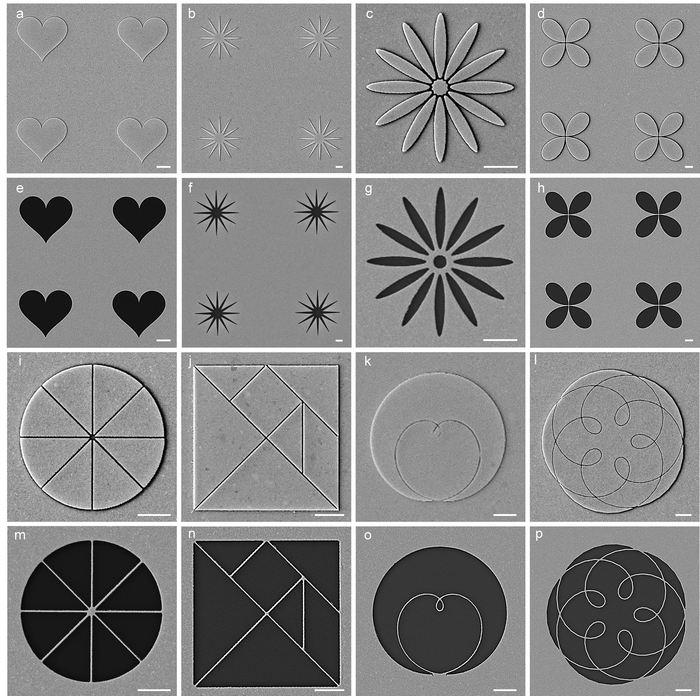Photoresist-based patterning strategies have been standardized for decades since the invention of photolithography. However, there are still major challenges in the processing of certain functional structures. For example, the standard resist-based high resolution patterning process usually requires point-by-point exposure of the target resist structures, leading to extremely low throughput and an unavoidable proximity effect when defining multiscale patterns, high-energy beam irradiation is easy to cause damage to the materials, and the negative-tone-resist-based lift-off process is challenging, stc.
Recently, the journal "National Science Review" online published the research results of Professor Duan Huigao's research group from Hunan University. The team proposed and demonstrated a new resist patterning stratgy "resist nano-kirigami". The outline of the target structure is exposed on the resist, and the excess resist film is selectively mechanically stripped. Compared with traditional electron beam lithography, this scheme has the following core advantages:

(a-d) and (i-l) Multiscale metal micro-nano positive-type structures with sharp features or extremely small gaps; (e-f) and (m-p) the corresponding inverse metallic structures after lift-off. All scalebars: 1 µm
1. It can effectively reduce the exposure area in the manufacturing process (for example, for a disc structure with a radius of 400 µm, the exposure area of this scheme can be reduced by 5 orders of magnitude compared to the traditional electron beam lithography strategy), which greatly improves the processing efficiency and achieves efficient fabrication of cross-scale "macro-micro-nano" complex functional structures that are difficult to achieve by traditional solutions.
2. Only the outlines of the target structure in the positive resist PMMA are exposed, both the positive- and negative-tone can be obtained by selective peeling of the PMMA.
The strategy provides a new patterning solution that expands the family of lithography techniques and will play a significant role in fabricating multiscale functional structures.
Read the original article on EurekAlert.
